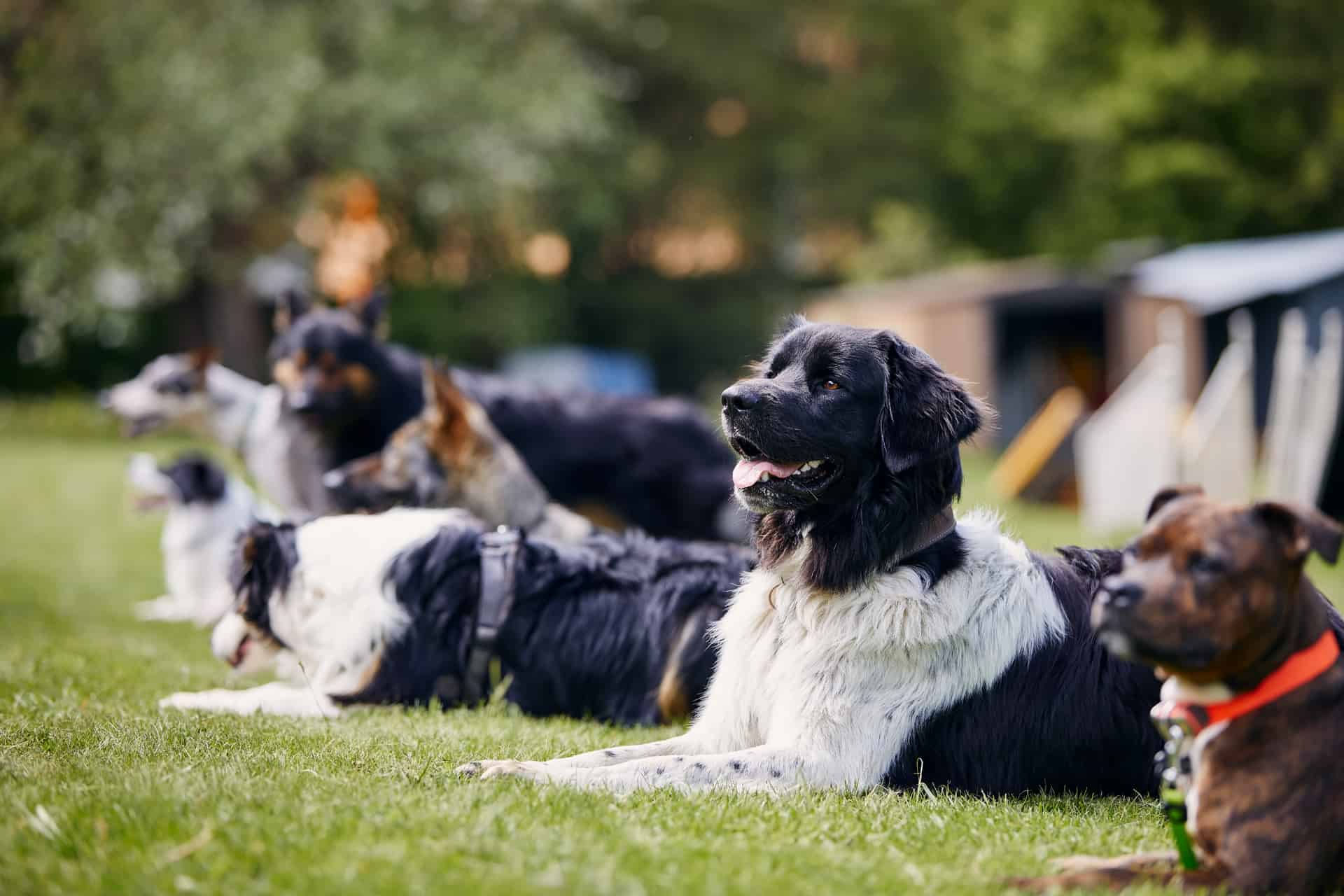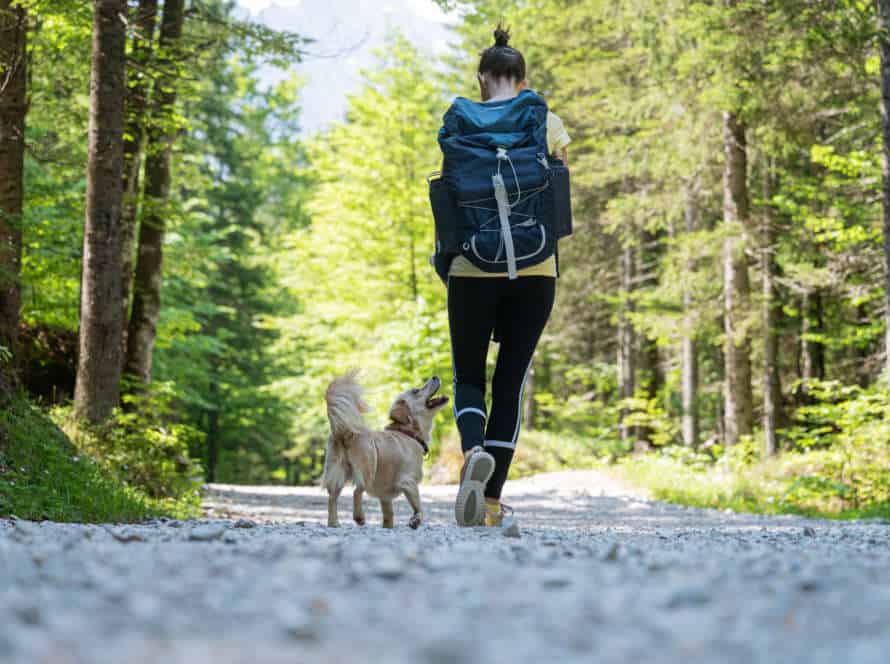Building a Strong Training Foundation for All Your Dogs
All dogs need a strong training foundation, no matter their age or background. A consistent routine and basic commands, such as sit, stay, heel and come, are key. Positive reinforcement is essential for creating a strong bond between dog and owner.
Tips for building a strong training foundation include:
- Start early – puppies learn quickly and this is the best time to build good behavior.
- Treats – treats are a great way to reward good behavior and create a positive link between a command and a reward.
- Patience – training takes time and some dogs are faster learners. Patience, consistency and positive reinforcement help build a strong foundation for all dogs.
Understanding Dog Training Basics
Dog owners: you must know the basics of training your pup! Learn how to read your dog’s signals. Understand the best techniques for teaching commands. Get to know the kinds of reinforcement that work. This article covers it all! Here are some tips for building up a strong foundation in dog training.
Positive reinforcement vs. punishment-based approaches
Positive reinforcement and punishment-based approaches are two contrasting ways to train your pup. Reinforcement means rewarding your pooch for good behaviors, with praise, treats, or play. On the other hand, punishment-based training uses negative feedback, such as scolding or physical corrections. This can be damaging to the trust in your pup.
Building trust with your four-legged friend is essential. Positive reinforcement is the way to go. It will create a healthy learning environment and help form strong training foundations. Be consistent and patient, and your pup will respond positively. Plus, you’ll have a stronger bond with your pup!
Benefits of positive reinforcement training
Positive reinforcement training is an incredible tool for dog training. It involves rewarding your pup for good behaviour. Here are its many benefits:
- Strengthening Relationships: This gentle and peaceful method builds trust and respect between the dog and its owner.
- Boosting Confidence: Praise helps dogs be more confident and have faith in their capabilities.
- Encouraging Learning: Positive reinforcement encourages dogs to learn and understand what is expected of them.
- Creating a Positive Environment: This type of training helps create a happy and peaceful relationship.
- Avoiding Negative Consequences: No punishment needed – positive reinforcement motivates dogs to learn a better behaviour.
Adding positive reinforcement training to your dog’s routine will help you build a strong connection and bond with your pup.
Common misconceptions about dog training
Misconceptions about dog training exist and can harm your efforts to form a strong bond with your pup. Here are a few:
- Punishing a pup for bad behaviour won’t work. It only stops the behaviour in that moment, and may cause fear and anxiety.
- Dogs don’t understand us automatically. They need to be trained to obey commands.
- Training isn’t just for dogs with issues. All pups can benefit from it!
Understand these misconceptions and focus on positive reinforcement, consistency and patience when training your doggo.
Essential Training Commands for All Dogs
Training your furry companion is a must for being a responsible animal guardian. Establishing a strong basis of basic commands is key to success. Teach your pup ‘sit’, ‘stay’, ‘come’ and ‘drop it’! These commands will help strengthen the bond between you and your pup.
Let’s discover the essential commands that you should be teaching your doggy.
Sit, stay, down, and come
Sit, stay, down, and come. These four commands are essential for every doggie owner! They form a foundation of obedience training. Mastering them can make a huge difference in your pup’s behavior.
Sit – Tell your pup to sit in a particular spot. Great for greeting others, walking, and waiting at crossings.
Stay – Keeps your pup in a certain spot until released. Especially important for safety when meeting strangers or other dogs.
Down – Tell your pup to lie down. Helps them relax and stay calm.
Come – Call your pup to you. Super important for safety when off-leash.
Patience, consistency, and positive reinforcement will help. With practice, your pup will learn to respond reliably.
Pro tip: Break down each command and reward progress along the way.
Training tips for these essential commands
Training your pup with necessary commands is vital for constructing a solid base. Here are some ideas to ensure your fluffy friends learn and obey these essential orders:
- Start with Basic Commands: Start with simple orders like “sit, stay, come, and heel.”
- Repeat Regularly: Practise each command often until your pup reacts to it consistently.
- Reward & Strengthen: Motivate good behavior by rewarding your pup with treats, verbal compliments, or petting.
- Be Patient: Keep calm and quiet while teaching your pup. Remember, patience is the key to success.
- Use Positive Reinforcement: Refrain from using harsh or negative training techniques like reprimanding, as they may make your pup fearful or anxious. Instead, use positive reinforcement to build a trusting and affectionate bond with your pet.
Most importantly, regular training with tenacity and patience is essential for a strong base for all your pups. Bear in mind, it takes time and effort but the results are worth it.
Pro tip: Utilize a clear and consistent tone when giving commands and be sure to appreciate good behavior.
Common mistakes to avoid
Training dogs can be tough. But, with the right methods, it can also be very rewarding. Still, some mistakes often occur that can slow progress and create tension between the dog and its owner. Here are a few to avoid:
- Sessions that last too long can cause boredom and lack of focus.
- Over-emphasis on discipline and punishment can hurt the relationship.
- Inconsistent training confuses the pup and stalls progress.
- Training in distracting settings without preparation leads to failure.
By avoiding these errors, you can create a strong foundation for your dog and benefit from a well-behaved, obedient companion.
Advanced Training Techniques for Specific Dog Breeds
Training is must-know for having a well-behaved pup. Each dog breed has its own needs and challenges. This article covers advanced techniques that require special approaches. For these breeds, training is key!
Different training needs for different breeds
Dogs, just like humans, have diverse personalities, talents and learning curves. As a pet owner, you must comprehend these variations and adapt your teaching techniques to suit your pup’s needs.
For example:
- German Shepherd: These dogs are adept at obedience training. They need to be exercised and mentally challenged to stay away from bad behaviour.
- Labrador Retriever: These pups are smart, lively and aim to please. They work well with positive encouragement, and are ideal for agility and hunting training.
- Chihuahua: These tiny furballs can be stubborn and hard to train. But, with patience and reliability, they can master basic instructions and obedience. They also need socialization and confidence-building activities to avoid fear-based aggression.
- Beagle: Beagles are scent hounds with a powerful prey drive. Specialized training is required to overcome their distractibility, and to teach them hunting and tracking skills.
- Golden Retriever: These dogs are intelligent and enthusiastic to please, making them one of the most straightforward breeds to educate. They are great at obedience and agility training, and also make great therapy and service dogs.
Knowing the distinct requirements of your pup’s breed will help you build a strong training base that encourages good conduct and strengthens the connection between you and your pup. Pro Tip: Utilize positive reinforcement to make training more enjoyable for your pup!
Agility and obedience training
Agility and obedience training are two great ways to give your pup a solid training foundation, no matter their breed. Agility helps them develop strength, speed and coordination, while obedience training is all about self-control, discipline and socialization.
Here’s how to get started:
For Agility Training:
- Start with easy obstacles like hoops and tunnels.
- Use treats or verbal praise to encourage them.
- Gradually make it harder with jumps and weave poles.
For Obedience Training:
- Begin with basic commands like sit, come, stay and down.
- Positive reinforcement is key to reward good behaviour.
- Increase difficulty with distractions or longer durations.
By using both agility and obedience training, you’ll have a loyal, well-behaved pup!
Tips for training sporting and working dog breeds
Trainin’ sportin’ and workin’ dog breeds needs a specific approach tailored to their breed characteristics, energy levels, and natural instincts. Here are some tips to help ya build a strong foundation for all yer dogs:
- Start with basic obedience trainin’ – like ‘sit’, ‘stay’, ‘come’, and ‘heel’.
- Use positive reinforcement – like treats and praise – to reward good behavior and get yer pup to repeat it.
- Introduce yer dog to different environments and situations to help ’em adapt to new challenges and distractions.
- Use specialised trainin’ equipment, such as agility courses or retrievin’ dummies, to channel yer pup’s natural instincts into productive activities.
- Train in short sessions of 10-15 minutes, several times a day, to keep yer pup engaged and avoid burnout.
- Adjust yer trainin’ technique to suit yer pup’s energy level and temperament, and always be patient and consistent in yer approach.
These tips will help ensure that yer dog gets the right trainin’ and attention ‘e needs to be healthy, happy, and well-behaved!
Socialization and Behavioral Training
Socialization and behavioral training are key in creating a strong foundation for your dog. These two factors are essential when it comes to giving your dog the best experiences with others. Properly done, these activities help your dog to trust and cooperate.
What are socialization and behavior training? How can they benefit your pup? Let’s take a look!
The importance of early socialization
Socializing your pooch is key for building a solid base for their behaviour and training. This way, they’ll be more comfortable with people, animals, and environments, which helps to avoid anxiety, fear, and aggression in later life.
Socialization is all about exposing your puppy to different people, animals, sounds, objects, and environments in a secure and managed way. It helps them learn and adjust to new experiences and individuals, so they become more determined, confident, and well-behaved pets.
It’s essential to start socializing as soon as possible, the best time being 7-8 weeks old, as younger puppies are more open to novel encounters. A socially developed dog is enjoyable to be around, and has a greater chance of living a happy and healthy life as a loved family member.
Pro tip: Talk to an experienced dog coach to make sure you’re introducing your dog to the right situations, at the right time, during socialization.
Addressing common behavior problems
Socialization and behavioral training are vital for your dog’s education. Socialization involves exposing Fido to different noises, scents, sights and people. This helps them get used to the world. Behavioral training educates them in commands such as sit, stay, come and leave it, and rewards them for good behavior.
Common issues that can be managed with socialization and training include barking, chewing, biting, digging and jumping on people. Patience, consistency and positive reinforcement are key to success. Start training early and seek professional help if needed.
Pro tip: Not only will socializing and training result in good behavior, but it will also strengthen the bond between you and your four-legged buddy!
Tips for successful behavior modification
Behavior modification is a gradual process that needs patience, persistence, and consistency to be successful. For this, here are some tips:
- Find the undesirable behavior and its cause.
- Put achievable goals and a realistic timeline in place.
- Use positive reinforcement, like treats, praise and playtime, for good behavior.
- Don’t use punishment or physical force – these can be counterproductive, or even harmful.
- Always remain consistent with commands and expectations across trainers and family members.
- Step by step, raise the difficulty and distractions during training sessions.
- Assess progress frequently, and make changes when needed.
With effort and commitment, you can help your dog develop desirable behaviors and increase your bond.
Pro tip: Talk to a professional dog trainer or behaviorist for individual advice and support.
Building a Consistent Training Routine
Train your pup! It’s an essential step. A strong foundation of consistent behavior will last forever. Consistent training routine is key. This article will cover why and how to build a successful one.
Why? Building a consistent training routine is important.
How? Create healthy habits for your pup.
Establishing a consistent training schedule
To create a strong training base for your dogs, it is vital to have a reliable training routine. This not only helps them learn faster but also allows you to observe their growth and amend the plan.
These are some tips for making a consistent training schedule:
- Allocate a particular time each day for training. It can be any time that matches your schedule, but make sure you stay consistent.
- Keep the training sessions brief. As dogs have a limited attention span, it is important to keep the sessions short and concentrated. Ideally, they should last between 10-15 minutes.
- Concentrate on one behavior at a time. To prevent your dog from becoming overwhelmed, focus on one behavior until they have learned it, then move onto the next.
- Practice regularly. Repetition is essential for successful training, so it is essential to practice every day.
Creating a consistent training routine takes a while and patience, but it will be worth it in the end.
Pro Tip: Utilize positive reinforcement methods such as treats and praise to motivate your dog during training.
Incorporating training into daily routines
Make your pup’s training routine consistent by implementing it into your daily life! Here are some tips to get you started:
- On walks, take a few minutes to practice training.
- During meal times, use basic commands like ‘sit‘, ‘stay‘, and ‘come‘.
- Use playtime to teach new tricks and reinforce good behavior.
- Stimulate your dog mentally using toys and puzzles, and reward them for good behavior.
With daily training, your bond with your pup will strengthen and your pup will be on the path to success! Pro Tip: Start off small and gradually increase the intensity of your training sessions to prevent uncomfortable situations.
Setting realistic goals for training and behavior modification.
When it comes to training your pup, it’s important to set achievable goals. Ones that match your pooch’s age, temperament and skill level. Here are some tips to help:
- Start basic: Make sure your pup knows “sit,” “stay,” and “come” before tackling more advanced activities.
- Consider their personality: If your pup is easily distracted or easily stressed, opt for simpler activities instead of ambitious ones.
- Acknowledge your time: You may not have an hour each day for training. Set realistic goals that fit your schedule.
By setting goals that suit you both, you can both bond and create a positive impact on your dog’s behaviour.
Frequently Asked Questions
Q: What is the importance of building a strong training foundation for all your dogs?
A: A strong training foundation is essential for your dogs to learn and understand basic commands, establish good behavior, and have a positive relationship with their owner.
Q: What are the basic commands that every dog should learn?
A: The basic commands every dog should learn include sit, stay, come, heel, and down. These commands form the foundation of obedience training.
Q: How do I begin building a strong training foundation for my dog?
A: Start by establishing a routine for training sessions, focus on one command at a time, use positive reinforcement, and be consistent with your training methods.
Q: Is it possible to train an older dog?
A: Yes, it is possible to train an older dog. However, it may take more time and patience compared to training a puppy. Some older dogs may also have pre-existing behaviors that need to be addressed before beginning training.
Q: How long does it take to build a strong training foundation for my dog?
A: The length of time it takes to build a strong training foundation for your dog differs from dog to dog. It depends on the breed, age, and temperament of the dog. Consistency, routine, and patience are key factors in successfully building a strong training foundation for your dog.
Q: Can I use treats as a form of positive reinforcement during training?
A: Yes, treats are an excellent form of positive reinforcement during training. However, it’s essential to use them sparingly and balance them with verbal praise and affection.







